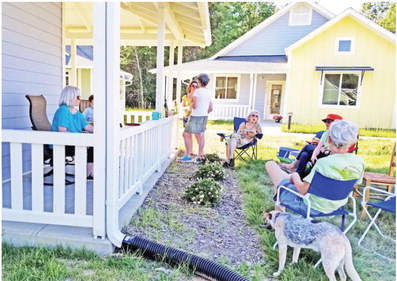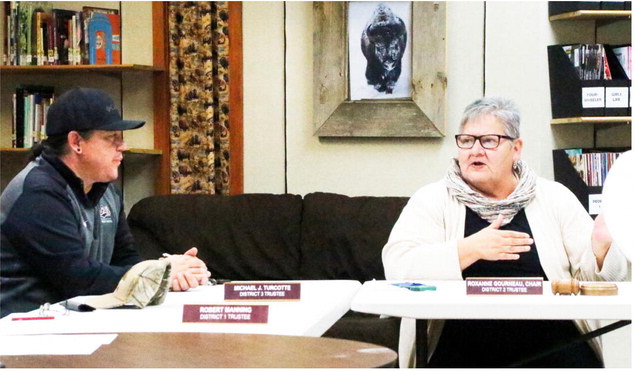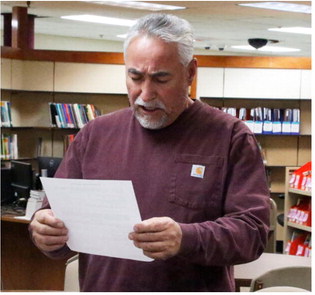A Home Of Their Own, Together


How Cohousing Communities Can Help Seniors Sustain Quality Of Life
Missoulian
Could senior cooperative housing, a model gaining popularity in states with aging populations, be the solution to alleviating social isolation and population loss in Montana’s rural small towns?
In Montana’s rural counties, where demographic trends show large numbers of young people leaving for the state’s fast-growing urban areas, the need for elderly housing solutions is going to become increasingly important.
These communities are losing population and growing older. But many seniors in these communities don’t want to leave because they know their neighbors and have spent decades as leaders in the community. Housing options for the elderly are few and far between in these areas. Older farmhouses are often poorly equipped for people to age in place, as they often have stairs and require lots of maintenance. Many small towns lack assisted living facilities or nursing homes, and many senior citizens don’t need or want that type of round-the-clock care, preferring a more independent lifestyle.
Across the United States, especially in places like Florida, Arizona and California, senior cooperative housing — organized around the concepts of resident control and sustaining independence with minimal services — is becoming an appealing model. Cooperative housing usually includes independently owned living units, such as condos or houses, arranged around a communal gathering space with some shared activities.
Senior cooperative housing communities are different from assisted living facilities or retirement communities because they’re not usually developed by outside entities, and residents take charge of programming, forming boards that govern everything from landscaping to occupancy. They often include shared kitchen facilities, outdoor areas and rooms where visitors can stay.
“What attracts older adults to senior cohousing is the desire for greater social engagement, for a ‘new old-fashioned neighborhood,’ as one member put it,” said Sherry Cummings, a former professor of social work at the University of Tennessee Knoxville who co-authored a book about the facilities. “They’re designed so people see each other a lot. They typically get together for several meals or activities each week. They help one another out with practical tasks, such as driving someone to the airport, and support each other through crisis situations.”
In 2016, the Montana Cooperative Development Center funded a feasibility study on the prospects for new housing cooperatives in the Northern Rockies. The study documented “a high degree of interest in the development of housing cooperatives as a potential strategy to address a number of housing needs in the northern Rockies.”
Jill Eversole Nolan, a retired Ohio State University faculty member, co-authored a study on rural cooperative housing for older adults for the Journal of Extension in 2001, aimed at giving extension offices information for people curious about the facilities.
“Cooperative housing for older adults would most certainly be a viable option in Montana,” she said in an interview with the Missoulian earlier this year.
Eversole Nolan completed her doctorate on quality of life for older adults in rural communities, with a focus on senior cooperative housing.
“In reviewing the literature, older adults wanted to stay in the community where they had lent their leadership and where they had family,” she said. “Their friends were there, their farm was there, but as dynamics changed many of the children would go off and not return to the farm, so they were at an age where they could not maintain the farm but they still wanted to stay in the community. But there were not housing opportunities.”
Eversole Nolan visited cooperative living communities for those age 55 and older in rural towns in the Midwest and in the southeastern United States.
“I interviewed one woman that was 95,” she recalled. “She said, ‘I was born here, I grew up here, I got married and raised children here and I want to die here.’ Something like a cooperative housing community was a good choice for her because she could not live in her home and continue her way of life.”
Older houses in rural areas lack upgrades that allow older, disabled and frail adults to function normally, Eversole Nolan said. Something as simple as a rounded faucet knob can be difficult for someone with arthritis, and a lack of elevators in multi-story housing can be impossible to live with for some.
She also noted that cooperative housing isn’t just for people who want to be social all the time.
“Some individuals didn’t want to partake in a lot of group interaction,” she said. “Others engaged in many activities. So it gave them a choice to choose the way of life they were accustomed to living.”
Margaret Roesch is an organizer for and resident of Village Hearth Cohousing, an intentional cohousing neighborhood for 55-and-over LGBT residents, friends and allies in Durham, N.C.
'We certainly never imagined, when we joined Village Hearth as members, that we would move in during a global pandemic,' Roesch said in a recent newsletter to members. 'It has certainly added some unexpected twists, but it also makes us all the more thankful and excited to be joining a community of caring people.'
The 28-residence facility includes a common house and was built just this year. People are moving in now, and instead of in-person happy hours, the group has instituted Zoom happy hours during the pandemic.


